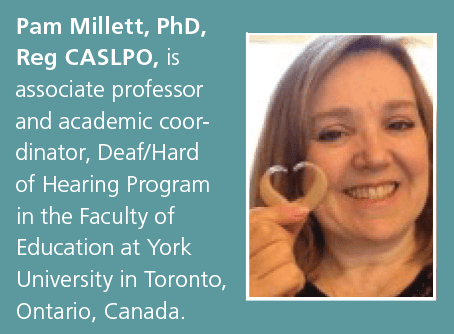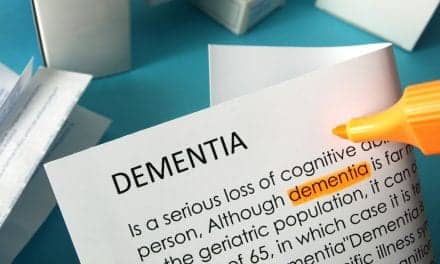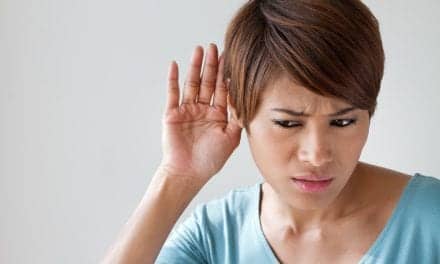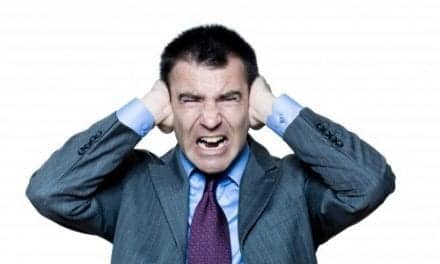Back to Basics | August 2022 Hearing Review
A review of classroom noise and teacher health
By Pam Millett, PhD
The detrimental effects of noise on speech perception for a number of different populations (eg, students with hearing loss, English Language learners, students with learning challenges, etc…) have been well documented. However, we should not forget the other ways in which high noise levels may impact student and teacher health and well-being at school. The number of studies on the non-auditory effects of noise continues to grow (see Waye & Van Kempen, 2021 for a review of occupational and community noise effects).1 There are some interesting differences in the research on non-auditory effects of classroom noise compared to research in other areas (eg, on sleep disturbance or job performance). While there is a small literature on the effects of environmental noise on classroom teachers (see Sargent et al, 1980),2 most classroom noise consists of speech, so non-auditory effects of noise may look different for classrooms than for other settings. A second difference is that much of this research has come as a byproduct of reducing the impact of the noise (ie, the implementation of sound field system, or classroom audio distribution systems), where anecdotal comments after the installation of these systems has highlighted problems of which people were previously unaware. Of course, research on sound field systems investigates the effects of improving the classroom listening environment by improving signal-to-noise ratio, rather than investigating the effects of reducing classroom noise. However, we can still find clues there.
Issues which have been extensively studied in other research on the non-auditory effects of noise (such as annoyance, blood pressure changes, health problems, and stress) have received almost no attention for classroom teachers. This may be related to the fact that classroom noise is “relatively” low in comparison to, for example, construction noise, or to the fact that any annoyance factor may be minimized since the noise source is primarily student voices. In fact, in one study by Kristiansen et al,3 the authors noted that “Noise disturbance attributed to traffic noise and ventilation and machinery in the schools…received very low disturbance ratings from most of the respondents” and found that student talking was the most prevalent and most annoying type of noise. This study indicated that approximately 82% of the teachers reported being exposed to disturbing noise for at least ¼ of the workday, and that annoyance reports regarding noise were highly correlated with reverberation times in classrooms.
Teacher vocal fatigue and absenteeism can be considered an indirect effect of classroom noise, but they are important nonetheless. Teachers are unquestionably at higher risk for vocal problems than other professionals.4 Research on teacher absenteeism due to vocal problems suggests that vocal problems may be the most common reason for teacher absenteeism.5 The societal cost of voice problems in teachers alone may be of the order of about $2.5 billion annually in the US (Rosow et al, 2016).6 While some of the vocal problems in teachers are attributable simply to the amount of talking they do during the school day, high noise levels exacerbate this problem because of the need to project one’s voice over the noise, not just occasionally to get students’ attention, but on an ongoing basis throughout the day.7
Vocal effort is related to individual factors such as fatigue, but also to environmental factors such as listener-speaker difference and background noise.8 Several studies have theorized that physical education teachers and kindergarten teachers are at highest risk because they teach in the highest noise levels and therefore have more vocal strain.9 Unsurprisingly, research has noted that voice power levels are related to room size and reverberation time, such that the same vocal effort will result in lower voice power levels and poorer speech intelligibility in a highly reverberant room (such as a gym) than in a smaller, less reverberant classroom.10 Bottalico et al (2016)11 measured teacher vocal effort and vocal comfort under a variety of acoustical conditions (including varying room size, reverberation time and background noise consisting of children’s speech babble) and found that vocal effort decreased when measures were put in place to improve the acoustical environment. They concluded that speakers change their vocal effort in response to auditory feedback of their own voices under different acoustical conditions. Mattiske et al (1998),4 discussed strategies for the prevention and treatment of vocal problems in teachers and reported that there is surprisingly little research on vocal use and vocal hygiene training programs for teachers. What is more surprising to me, though, is the very meager body of research on the effects of simply improving the acoustical environment of the classroom so that teachers do not have to strain their voices, despite the fact that Roy et al (2002),12 found that sound field amplification had a greater impact on vocal strain than did teacher hygiene training programs and that teachers using voice amplification reported less voice handicap and voice disorder severity, corroborated by objective acoustic analysis. Sapienza et al (1999),13 found that teachers used less vocal effort with a sound field amplification system, while Jonsdottir et al,14 in a study of teachers and students from both elementary school and college/university classrooms, noted that without amplification, 70% of teachers reported throat discomfort prior to trial of sound field amplification. This decreased to 27% after sound field installation.
The COVID-19 pandemic has offered us an interesting perspective on this approach of addressing vocal problems by improving the acoustical environment. Shekaraiah and Suresh (2021),15 in a systematic review of the effects of masks on vocal production during the pandemic, reported that masks result in results in increased vocal effort, vocal fatigue, discomfort, and perceived voice problems. However, there has been a decrease in reported vocal problems among teachers during the pandemic with remote learning,16 which is theorized to be due to decreased background noise levels.

Citation for this article: Millett P. Non-auditory effects of noise in the classroom on teachers. Hearing Review. 2022;29(8):20-21.
References
- Waye KP, Van Kempen E. Non-auditory effects of noise: An overview of the state of the science of the 2017–2020 period. Paper presented at: 13th ICBEN Congress on Noise as a Public Health Problem; June 14-17, 2021; Stockholm, Sweden.
- Sargent JW, Gidman MI, Humphreys MA, Utley WA. The disturbance caused to school teachers by noise. Journal of Sound and Vibration. 1980;70(4):557-572.
- Kristiansen J, Lund SP, Nielsen PM, Persson R, Shibuya H. Determinants of noise annoyance in teachers from schools with different classroom reverberation times. Journal of Environmental Psychology. 2011;31(4):383-392.
- Mattiske JA, Oates JM, Greenwood KM. Vocal problems among teachers: A review of prevalence, causes, prevention, and treatment. Journal of Voice. 1998;12(4):489-499.
- Medeiros AMD, Vieira MDT. Work absenteeism due to voice disorders in Brazilian schoolteachers. Cadernos de Saúde Pública.2019;35(Suppl 1):e00171717..
- Rosow DE, Szczupak M, Saint-Victor S, et al. The economic impact of vocal attrition in public school teachers in Miami-Dade County. The Laryngoscope. 2016;26(3):665-671.
- Smith E, Lemke J, Taylor M, Kirchner HL, Hoffman H. Frequency of voice problems among teachers and other occupations. Journal of Voice. 1998;12(4):480-488.
- Pelegrín-García D, Smits B, Brunskog J, Jeong, C-H. Vocal effort with changing talker-to-listener distance in different acoustic environments. The Journal of the Acoustical Society of America. 2011;129(4):1981.
- Sarfati J. Vocal retraining of teachers. Rev Laryngol. 1989;110(4):393-395.
- Astolfi A, Bottalico P, Accornero A, et al. Relationship between vocal doses and voice disorders on primary school teachers. Paper presented at: Euronoise 2012; June 10-14, 2012; Prague, Czechoslovakia.
- Bottalico P, Graetzer S, Hunter EJ. Effects of speech style, room acoustics, and vocal fatigue on vocal effort. The Journal of the Acoustical Society of America. 2016;139(5):2870.
- Roy N, Weinrich B, Gray SD, et al. Voice amplification versus vocal hygiene instruction for teachers with voice disorders: A treatment outcomes study. Journal of Speech, Language, and Hearing Research. 2002;45(4):625-638.
- Sapienza CM, Crandell, CC, Curtis B. Effects of sound-field frequency modulation amplification on reducing teachers’ sound pressure level in the classroom. Journal of Voice.1999;13(3):375-381.
- Jonsdottir V, Laukkanen A-M, Siikki I. Changes in teachers’ voice quality during a working day with and without electric sound amplification. Folia Phoniatrica et Logopaedica. 2003;55(5):267-280.
- Shekaraiah S, Suresh K. Effect of face mask on voice production during COVID-19 pandemic: A systematic review. Journal of Voice. September 23, 2021.
- Patjas M, Vertanen-Greis H, Pietarinen P, Geneid A. Voice symptoms in teachers during distance teaching: A survey during the COVID-19 pandemic in Finland. European Archives of Oto-Rhino-Laryngology. 2021;278:4383-4390.





